Annabelle
Selldorf
An architect of precision and poise
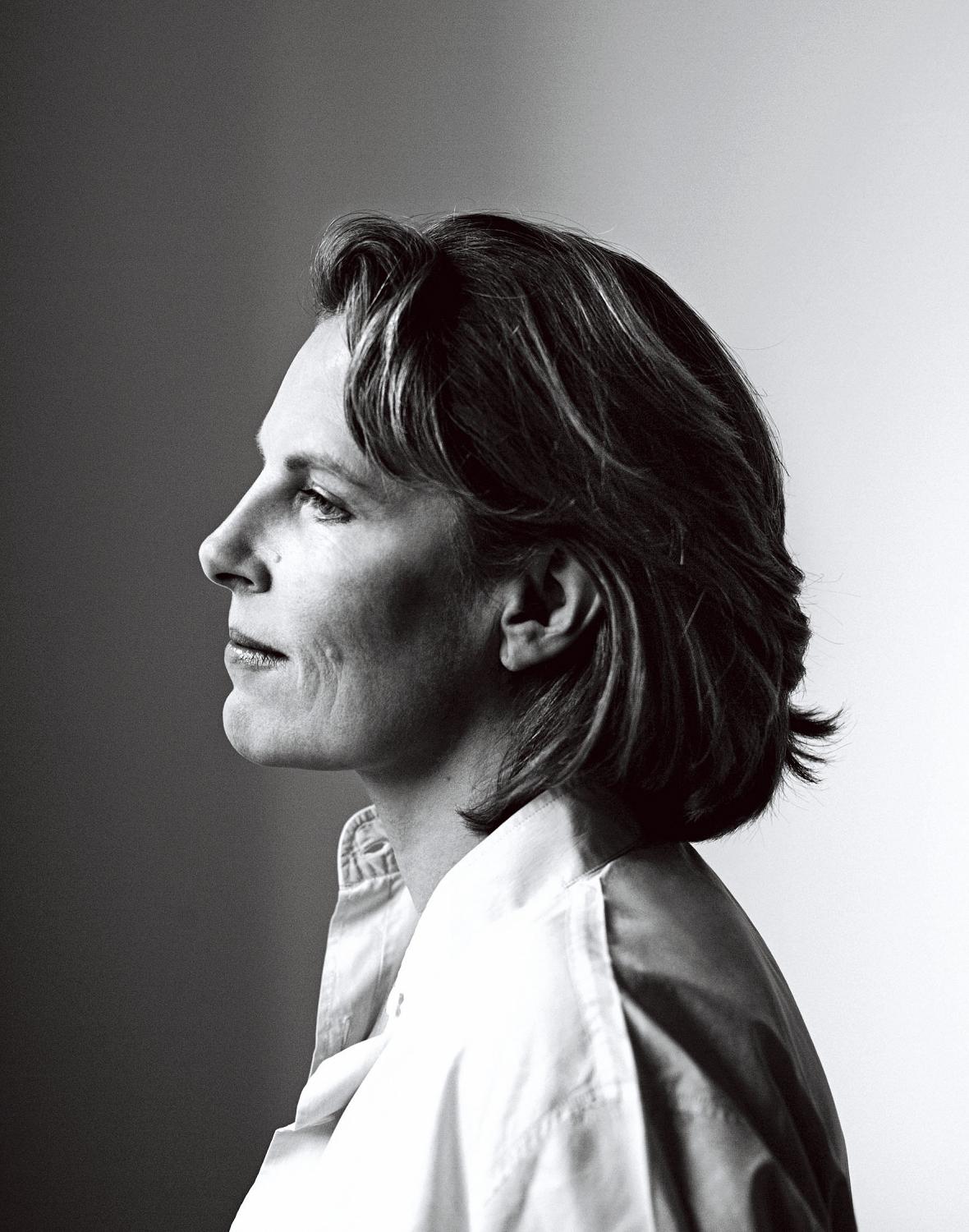
Annabelle Selldorf is the queen of stealthy architecture. Not for her the big move: she really can’t stand a wow factor. Instead, the wry German 53-year-old has wooed the art world – whose key figures frequently knock on her door – with designs that exude quiet confidence. More recently, she applied the same rules to a state-of-the-art recycling centre just outside New York, where she lives.
Next on her list is a major addition to a prestigious Californian museum. She might have started small, but now Annabelle is building very big indeed.
Entering the apartment building where the architect Annabelle Selldorf lives is an event in itself. Its fabulous and monumental Arts and Crafts lobby, complete with ancient retainer seated behind his desk, is one of central Manhattan’s better-kept architectural secrets – a vibrant reminder of New York at its glamorous and optimistic best. Riding the elevator, with its perfectly buffed brass plates and dark wood doors, is like a journey back in time.
Inside Annabelle’s apartment, the old mingles seamlessly with the new. Among an explosion of artworks that flank her front door are drawings by Yves Tanguy and Marcel Broodthaers, paintings by Jean Fautrier and Markus Lüpertz, two exceptional old masters, and pieces by artist friends including the Turner Prize nominee Enrico David, all curated in a perfect hang. “I like surrealism and abstraction,” she says. In one extensive window-lined space that graduates from sitting to dining room to kitchen are a delicately embroidered sofa by Hella Jongerius, a Ming daybed and cupboard, 1950s glass Italian lampshades, dining chairs designed by Annabelle’s mother – slender metal frames simply upholstered with leather – and a dining table designed by her father. He was an architect, and her mother trained as an artist. “But she spent time working with my father, and she started to draw, and then she designed a chair and it just went from there,” says Annabelle. The floor is exuberant stripes of white and grey marble. “It makes me think of Rome in the 1950s,” she says. “It’s very sensual and three-dimensional.”
Annabelle is a star in her native Germany (where she’s done a little work) and much celebrated in her adopted country, the United States (where she’s done a lot). While her reputation lies a little further under the radar everywhere else, in her office on Union Square, in the building that was once home to Andy Warhol’s Factory, her staff of 60 is currently working on 40 projects, including six new-build residential towers in Manhattan, an art foundation in southwest France for the pharmaceutical heiress and phenomenal art collector Maja Hoffmann, a museum in Massachusetts and private housing in Taiwan. “That’s my first residential project in Asia,” she says, “and I’m learning a new set of rules, like you cannot have a bedroom facing the street.”
She was born and brought up in Cologne (“July 5, 1960,” she replies with Teutonic precision when asked her age) but has spent the last 30 years in the US. “Thank God,” she says.
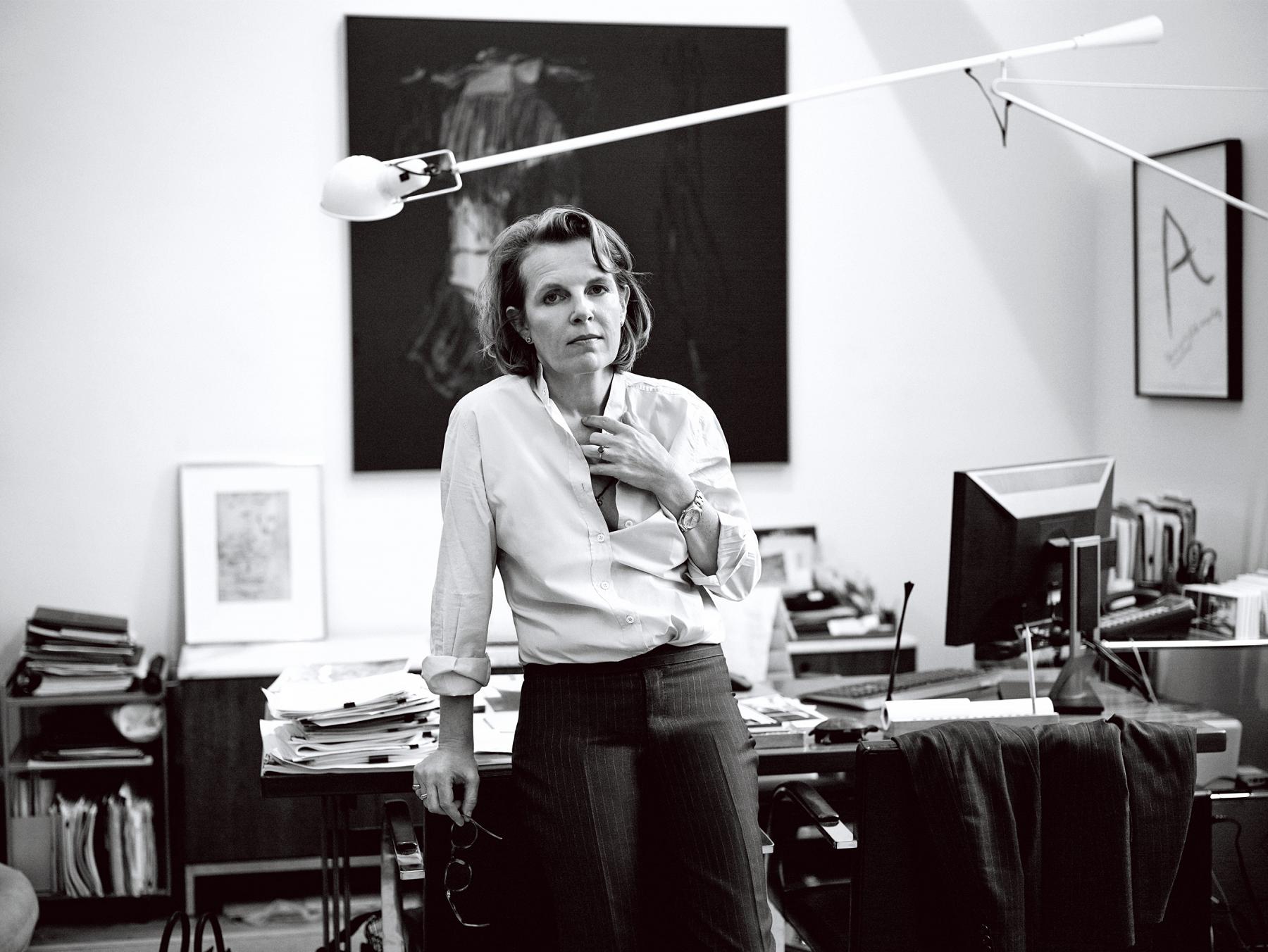
“It’s given me time to acquire a sense of humour. Germans can be too serious, and the key to just about everything is a sense of humour.” Hers is as wry and as dry as they come. “Yeah, that’s me, 50 shades of grey,” she says, discussing her preference for neutrality, restraint, and most especially the colour grey in its many variations. (Dealers at Frieze Masters, the London art fair whose tent she designed, were given a choice of three for their booths. Or white.) But then, more seriously, she says, “If you calm everything down, you accomplish more. My work is not minimalist, but it is about finding the essential, not about detail. And if people say to me, ‘Where’s the wow factor?’ I’m like, ‘Are you kidding?’ I hate that. I love to build a beautiful staircase, but it’s not about wowing someone, it’s about a really excellent staircase.”
For over 20 years now, she’s spread her elegant architectural language liberally around the art world, starting in 1990 when she designed the interior of a small gallery on New York’s 67th Street for the explosive German dealer Michael Werner. She went on to renovate the interior of his Venetian palazzo, restoring its L-shaped salone, painting the walls a soft white and recreating traditional lime terrazzo for the floors with local specialists. “That’s one of my favourite projects,” she says. “It was really an exercise in making something immensely beautiful. That was the only thing that Michael cared about. I went there just after my mother’s funeral in 1994, and I remember walking through this incredible, empty finished house and feeling so sad. I really owe a lot to Michael – a complex, extraordinary person.”
She’s gone on to create a series of spaces and exhibitions for Larry Gagosian, spectacularly transforming his 21st Street gallery on five occasions to respond to artists as grand as Picasso (twice), Monet and Rauschenberg. For a Francesco Vezzoli show – a series of supermodel madonnas called Sacrilegio – she magicked up a darkened Renaissance chapel, which didn’t entirely stop several critics from savaging the artist’s work. But then no one remains unscathed in the art world. “People even say horrible things about Larry,” says Annabelle, “conveniently forgetting the museum-quality work they get to see for free in his galleries.”
She’s designed homes for artists such as David Salle, Eric Fischl and Cindy Sherman (“I helped a bit with her Long Island house”) and collectors like Stephen and Ann Ames, and a studio for Jeff Koons. She’s rolled out a range of projects both personal and professional for the powerful Swiss gallerists Manuela Hauser and Iwan Wirth, from art galleries in spaces as complicated as a Lutyens-designed bank in London and a former roller disco rink in New York to a family house in London’s Holland Park. “I love that they like messy art,” she says. “It’s an unusual combination – a Swiss gallery that says, ‘Let’s get up close and uncomfortable.’”
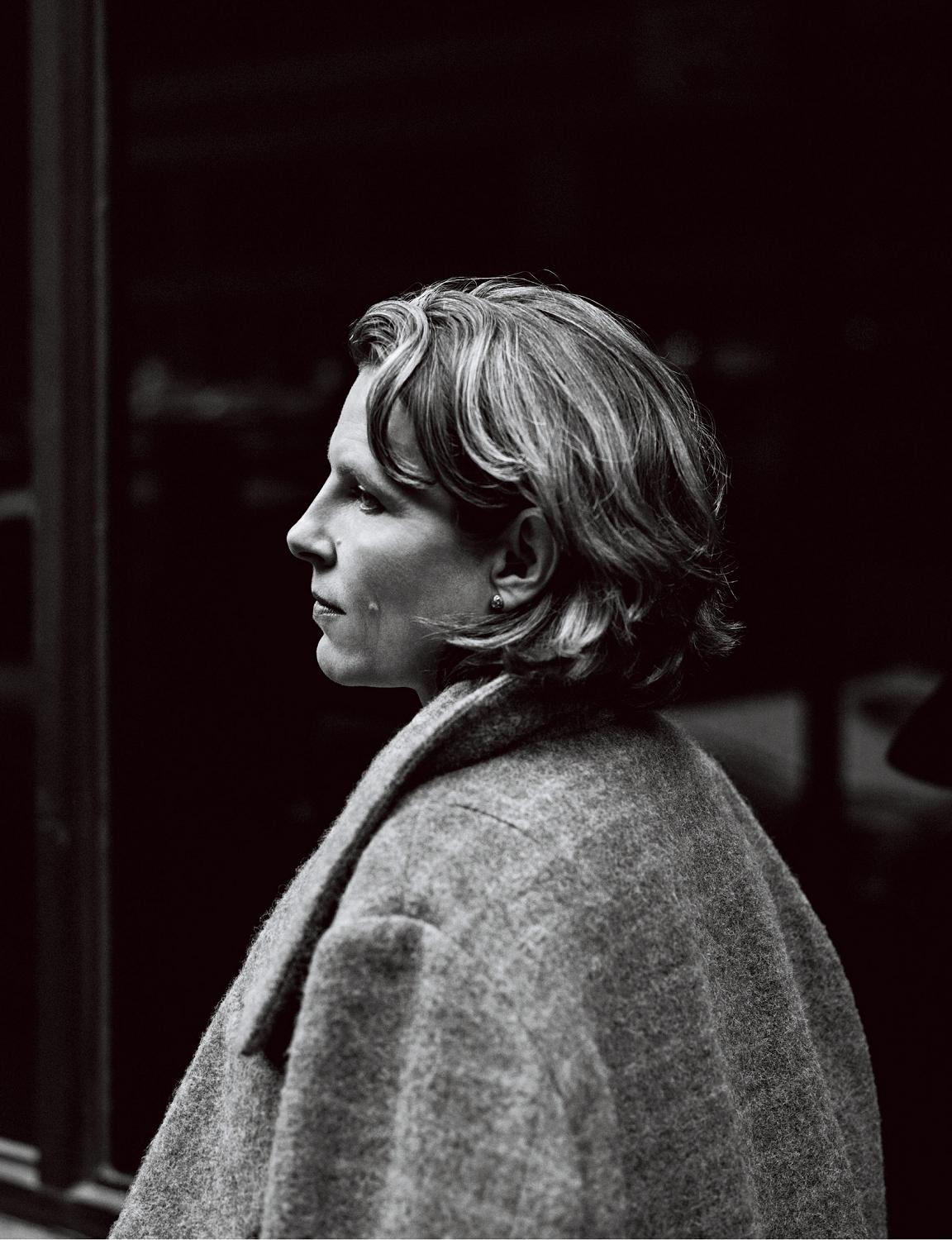
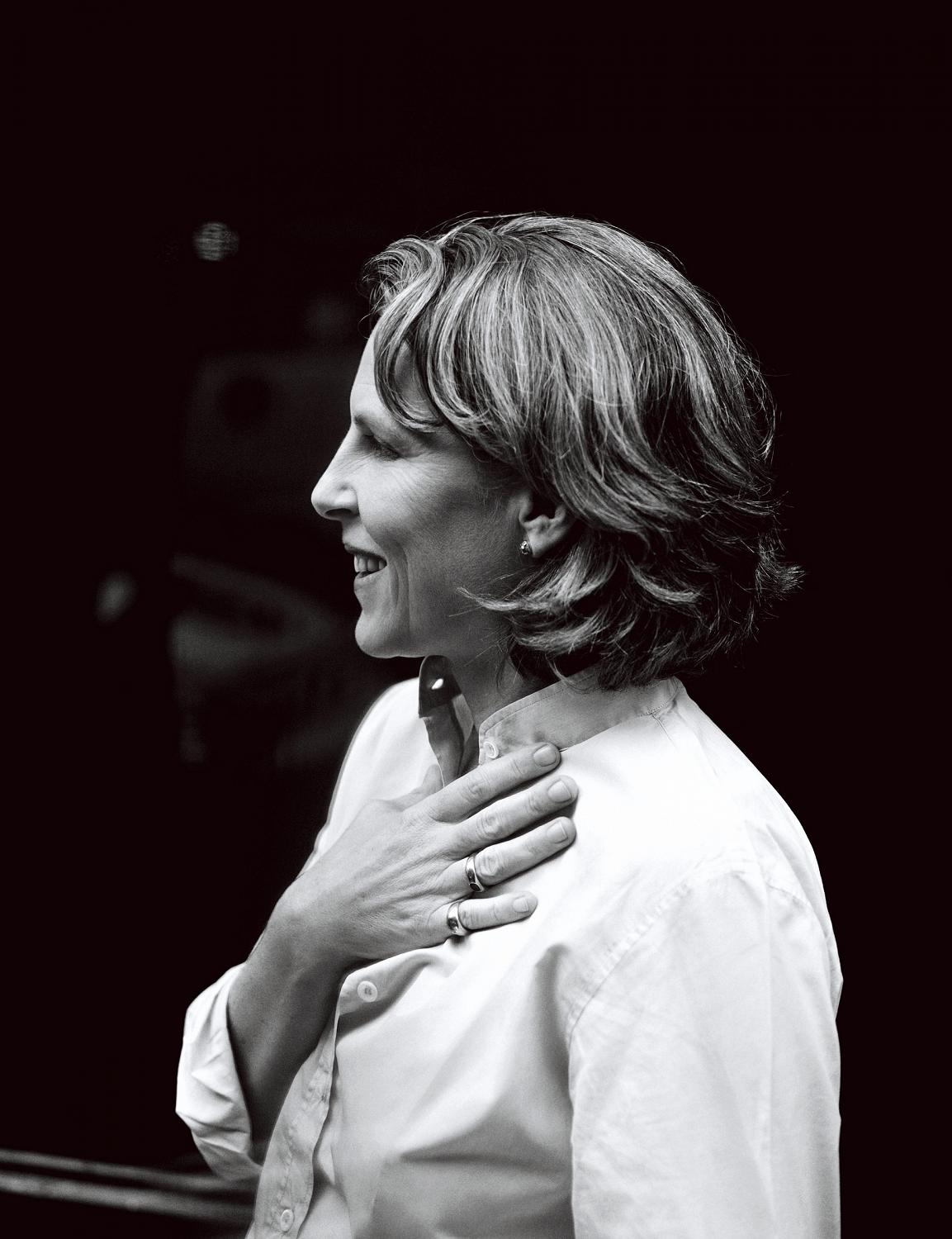
Annabelle outside her office in Union Square, New York; the building once housed Andy Warhol’s famous Factory. The incredibly elegant leather-and-chrome chairs in the reception of Selldorf Architects were found in a skip on the street.
If that’s already quite a show of confidence from the art world’s movers and shakers. But consider Annabelle’s most dedicated client of all, for whom she’s completed at least 18 projects: David Zwirner, the New York-based art dealer who, at number two on this year’s influential Art Review power list, is currently the most determined mover and shaker of them all. “We both come from Cologne,” says the urbane Zwirner, talking over the phone from the East Village home that Annabelle created for him and his family by splicing two townhouses together. (The previous week, he’d hosted a dinner for 70 there after an opening.) “But we met at a party in New York in the 1980s. I fell immediately in love with her; she was gloriously beautiful.”
Their relationship is fascinatingly close (“David’s one of my best friends,” says Annabelle. “He’s like family. We kind of grew up together”), and though it’s never been a romantic one, it was on Valentine’s Day last year that Zwirner and Selldorf celebrated the opening of his new concrete-construction art gallery on 20th Street in Chelsea, which Annabelle designed. It offers around 3,000m2 of dedicated daylit space over five floors, as well as a LEED Gold certification, the highest environmental rating a new building can achieve in New York (it’s the only commercial art gallery in the city to do so). “At a gallery, form follows function,” says Zwirner. “The important thing is that the art must look as good as it possibly can, and that’s what Annabelle excels at. Her understanding of light and space is unique. But when we opened the new place, I was fascinated by how many people just talked about the art.” (To be fair, the exhibition and project space launched with the very best work by Donald Judd and Dan Flavin.) “We’d put our heart and soul into the building, so I was disappointed that people weren’t talking about that instead,” he adds. “But on the other hand, it had fulfilled our rationale that the art must prevail.”
“You get quite close to someone who tells you where they want to put their socks.”
At the end of 2013, Annabelle was enjoying the completion of a rather different project: the low-budget, high-performance Sims Municipal Recycling Facility in Brooklyn. At a far remove from the glittering art world, this state-of-the-art waste plant, built on a post-industrial 11-acre waterfront site, will turn around 18,000 tonnes a month of Manhattan’s waste metal, glass and plastic once it’s fully functioning. To up its sustainability credits further, rubbish is delivered from the five boroughs not by road but by barge.
On the day we visit, the sun is sparkling on the river beneath a dense blue sky, and the building’s exterior, covered in a pale silver corrugated cladding called Fabral, has a delicate glimmer. “I had to fight for that,” Selldorf, huddled up in jeans and a black padded jacket, says of the treatment, “even though it only added a fraction to the cost.” The centre is a series of modest but proportionally perfect rectangular buildings linked by a glazed passerelle from which visitors can gaze down into the recycling zones, lit by prism skylights; the heaps of brightly coloured rubbish look as pretty as an art installation. A decision taken in 2011 to raise vulnerable parts of the site four feet above the city-required level turned out to be a wise one. When Hurricane Sandy hit New York in October 2012, the 12ft surge inundated nearby streets, but Sims stayed nice and dry.
With us is Tom Outerbridge, a rangy 50-something who is Sims’ general manager and, for a few years now, Annabelle’s partner. (Her appointment as architect significantly preceded the beginning of their relationship.) An English and philosophy major at university, he became immersed in recycling issues in the late 1980s after a spell writing for The Ecologist and has since become an expert environmentalist. “It was Tom who decided to raise the site,” says Annabelle. “That’s down to his deep understanding of climate change.”
Trotting behind is Jussi, the 3-year-old yellow Labrador/corgi mix the couple collected from a shelter in Brooklyn exactly a year ago. “It was a really nasty place, though they treated him nicely,” says Annabelle, who tonight will cook him a special stew to mark the occasion. “A proper one, with steak and carrots.”
Inside the buildings are a canteen and a generous education centre that Outerbridge is keen to exploit fully and full time (not with “some bad film” but with “serious activities and information”), plus offices, kitchens and changing rooms with showers for those at the sharp end. Cupboards are finished in a chic oyster-coloured laminate, and a rigorous row of ceiling lights in the engineer’s office wouldn’t look out of place in an art gallery. “We went over and over this lighting plan,” says Selldorf, apparently satisfied with the result, though less so with the basins in the washroom. “They look super-nice, but maybe too small.” Who specified them? “Well, me, I guess.” She grimaces in self-criticism. In the plant proper, a vast system of canary-yellow machinery fills the space. “I have a level of awe for all this technology,” she says. “You know, this project is not about beauty, but there is a lot of beauty here.”
I first met Annabelle several years ago at the house of an art dealer whose interior she had renovated. Paintings by Sigmar Polke and Francis Picabia hung on the white walls (she tends to use a colour known as Superwhite: “It’s best for art”); the room’s proportions had been artfully tweaked into architectural perfection. Annabelle was wearing a neatly androgynous navy blue trouser suit and had such directness and immediate charm that I was instantly dismayed that she was only stopping by for a drink and not joining us for dinner. All, it turned out, was typical, from her manner and lack of time to the interior’s unobtrusive perfection and her sharp but somehow underplayed outfit.
“I had this idea that if I had five great suits I could wear them all the time,” she says as Tom drives us back from Brooklyn to Manhattan and the conversation turns to fashion. “So I got Timothy Everest to make them. This was about 20 years ago. The funny thing is, I still have those suits, and I do still wear them.” She pairs them with flat Céline shoes and a Saint Laurent handbag. “I always wear the same clothes, not because they’re the only ones I like, but because I’m not that interested. I saw a picture of myself in one of those class photos not long ago, aged 15 or something, and I look totally the same. The same kind of shirts, the same kind of jeans. My hair was more or less the same.”
Annabelle’s rationality and rigour are pervasive, then. But not boring. Once I had dinner chez Selldorf, and she served an incredible elk ragù – her brother, a soccer writer for the Süddeutsche Zeitung who’s based in Cologne and once a year indulges in a spot of hunting, sends her an annual chunk. The sauce was composed of tiny squares of meat cut like exquisitely matched pixels with corresponding pixellated pieces of carrot. It was a delicious meal, luxurious even. We ate it with a fresh white Rhineland wine and drank water from incredibly fine Murano glasses, each with a delicate line of white around the rim.
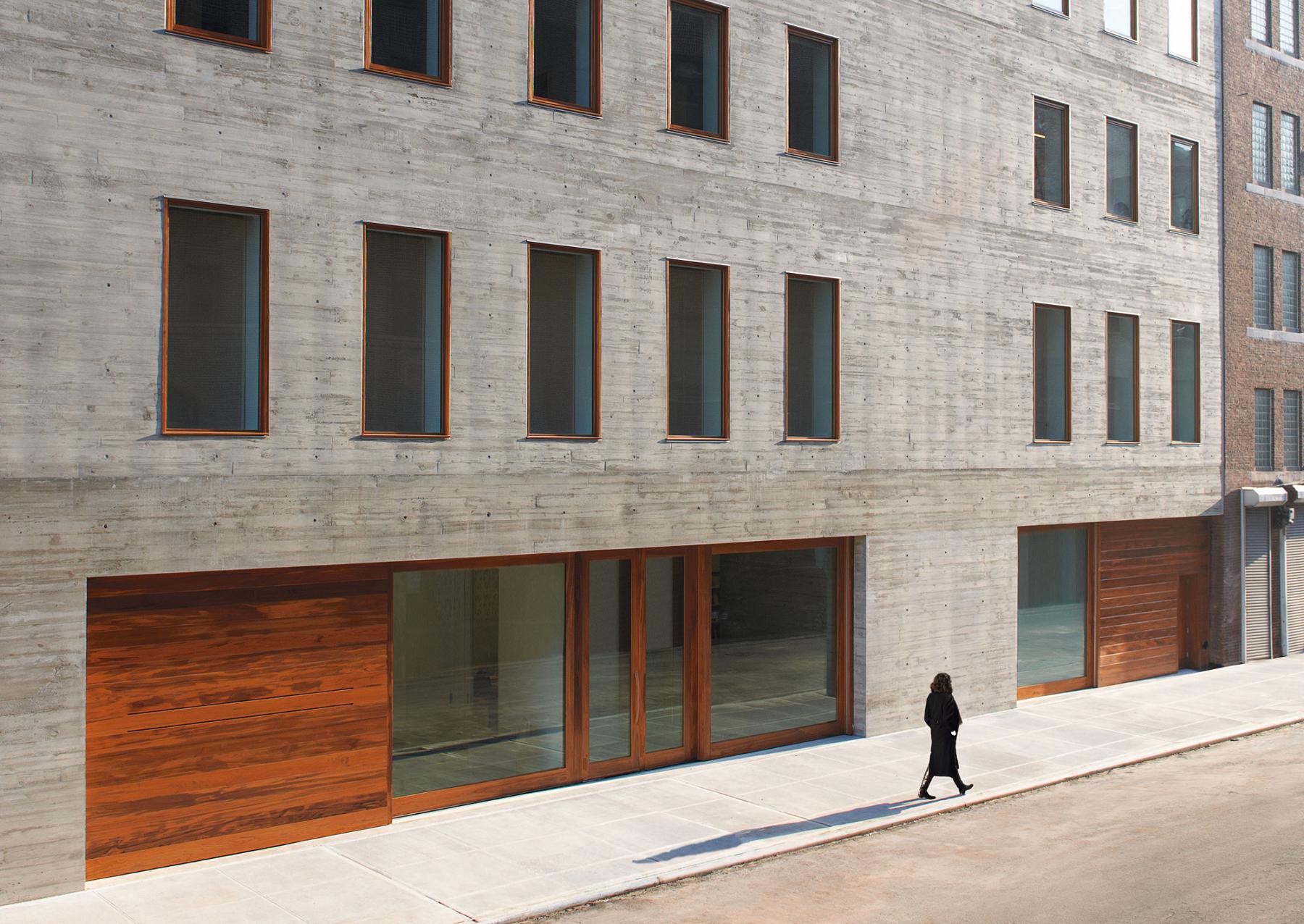
This is the David Zwirner gallery on New York’s 20th Street, which opened on 14 February 2013. The concrete structure was all poured onsite, highly unusual for New York. Photograph by Jason Schmidt.
It is no surprise to learn that Annabelle’s background was liberal and cultured. “Her mother was very good-looking and quite flamboyant,” says Katrin Bellinger, a friend from kindergarten days who, when in London, lives in a house Annabelle chose for her – a generous 19th-century building that was transformed into a brutalist edifice by the architect Denys Lasdun in the 1970s and then back to Victorian high camp by an interior designer in the 1980s. “She said it had the perfect vibe,” says Katrin. Annabelle set about removing the garish excesses and painting the walls a super-soft grey. Nearly 20 years on, it’s a beautiful home that maximises all the available grey London light thanks to her unravelling of the internal spaces. A square but dainty Herbert chair upholstered in dazzling yellow silk and an elegantly angular sofa – both made by Vica, the furniture company started by her grandmother in 1950, which Annabelle relaunched in 2004 – punctuate the drawing room.
When Annabelle headed to New York, aged just 19, to study architecture at Pratt Institute in Brooklyn, Katrin went too but stayed just a year. “Annabelle really worked her way through college; it was pretty tough,” says Katrin, who is now a dealer in old masters, eschewing the cutting-edge contemporary art she grew up with in Cologne. (As children they used to ride together; now Katrin and Annabelle share the same strikingly even features, clear blue eyes and refined bone structure, as well as a hairdresser, and frequently get mistaken for each other.) “She’s not tough by nature, but she’s hard-working and determined. She’d live in terrible places, where you had to walk through someone else’s living room to get to her flat, and another that didn’t have a window, just a dirty skylight.”
“If I’d stayed in Germany, I probably wouldn’t be an architect,” says Annabelle. “Back in Cologne, architecture meant the world of my father. Coming to New York allowed me to try it out on my own terms. I’d always imagined that I’d go to Paris, but then I found myself in New York in 1979, and it was better than Paris. Much bigger and that much weirder, more fascinating, and much more free. It didn’t really matter that I was this little blond girl from Cologne.”
Having worked in the office of Richard Gluckman – back then, the go-to guy for the perfect art gallery – throughout her studies, and after a stint at the rather pedestrian Fox & Fowle (she won’t comment when asked if they had a sense of humour about their name), she knew she wanted to be her own boss, “even though I was intimidated,” she says. She started small, working out of the large loft she’d been lucky enough to move into in Mercer Street in SoHo. “I had one big dining table that somebody gave me, and that became my desk, and a futon.” She did a kitchen for a friend, then another.
“The advantage of doing small projects as a young architect is that you deal with scale,” she says of the logical progression from rooms to houses and modest-sized galleries. “I always thought that’s how you learnt to do buildings, by knowing how to do a house, though now people go straight off and do a big building.” Her first house was for the figurative painter David Salle in 1996. “It’s a lovely place, a very simple, very kind of Shakeresque house, but it was a pretty traumatic experience.” She does not own any of Salle’s work.
A happier experience was to be had working with David Zwirner and his wife, Monica, on their East Village home. “Annabelle likes quite austere spaces,” says Zwirner, “so we had to push her out of her comfort zone. We wanted it to look like a house with a history. We pushed her to look at the early 20th century, the pre-war years – grand, beautiful, elegant homes. You know, with my profession comes a bit of control freakery.
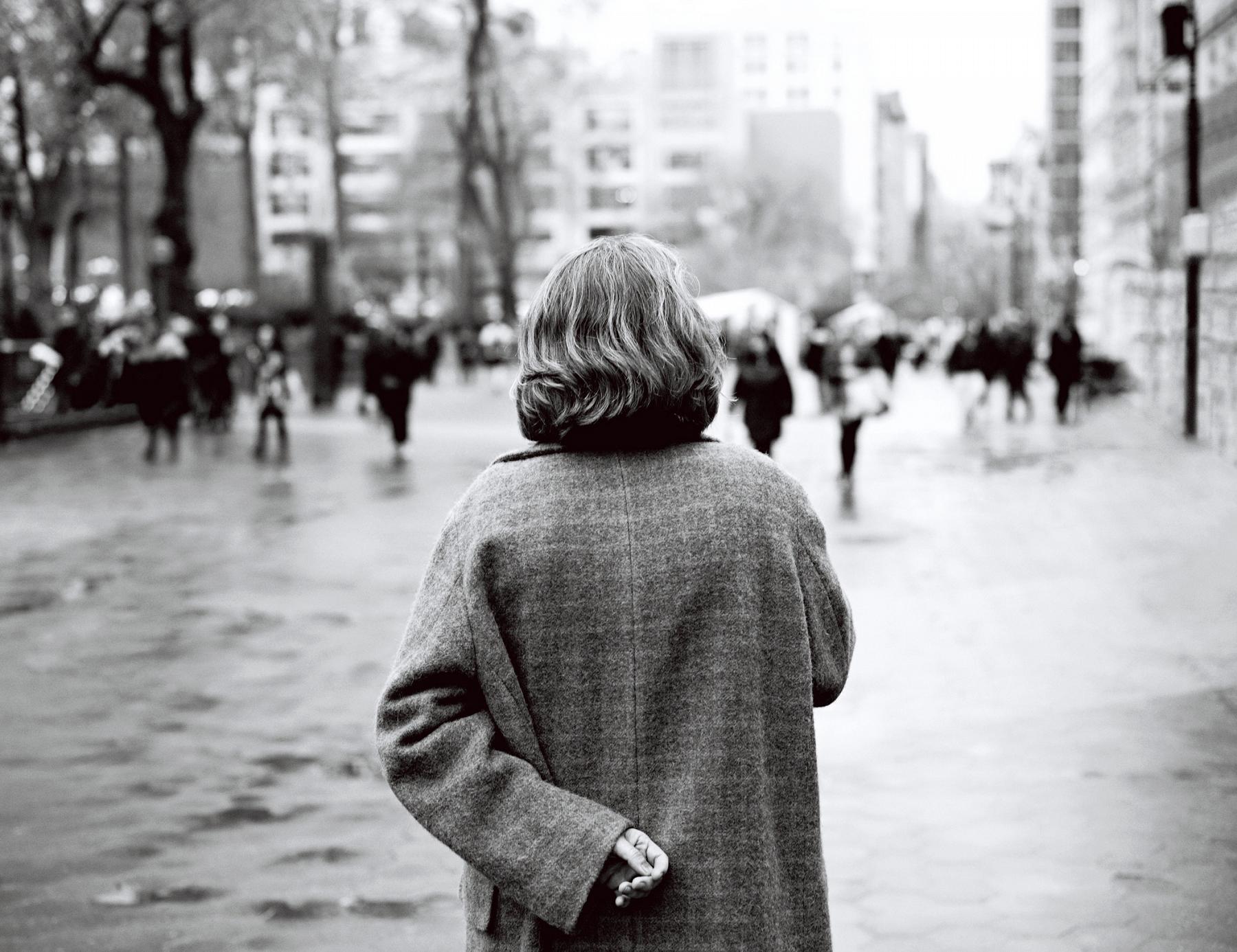
Annabelle likes to walk to her office everyday with her 3-year-old Lab/corgi, Jussi, and works from 8am to 8pm.
“She’s so clear about what she wants to do,” continues Zwirner. “Annabelle has a strong set of core beliefs but is also a great listener. I’ve tried working with other architects, and they were authoritative, but they just couldn’t listen.” Next up is a small (250m2) house for his family on Long Island. “But there’s no rush,” says Zwirner. “I want it wooden, I want it to blend in, and I want it sometime in the next two years.”
“I’ve often thought that my projects end up looking like my clients,” says Annabelle. “They’re portraits. You get quite close to someone who tells you where they want to put their socks. You find out so many things about them. I used to say I had to fall in love with people in order to do something really great and special, but that’s changed over the years. Now I look for mutual respect and the commitment to making a project of real quality together.”
Annabelle’s office is a quiet, understated place, with a hearty wooden floor that befits its industrial past and partitioning made of translucent ribbed polycarbonate that suits its creative present. The walls are lined with Bernd and Hilla Becher’s iconic series of black-and-white photographs of industrial buildings. Eva Lemmer, the company’s director of administration, is showing me round. “I answered an ad in The New York Times,” says Eva, who’s originally from Bonn. “That was in 1998.” Her job, she says, “is to protect Annabelle so she has time to focus on design.” It includes hiring staff, who are young and international – “Germans, Swedes, South Africans, Puerto Ricans, and people from various Asian countries, and of course Americans,” says Eva. “We look for certain skills, but most importantly, the stars have to align.”
Annabelle is Cancerian. She says it means she’s melancholic. “We hold on to things. I always say that I’m not sentimental, but maybe I am. I get incredibly sad and worried and nervous, overwhelmed. But I think that’s part of it – conquering your worries, growing into the next thing.” Her friends and clients would probably agree that it’s precisely this vulnerability and questioning attitude that make her a good friend and a great architect. She listens and absorbs, and, as her friend the Chinese antiquities expert Nick Grindley says, “She has patience about the right things.”
Her staff need some of the same qualities. “The people who work in the office are incredibly patient and precise,” says Annabelle. “They have tiny handwriting. They’re analytical, systematic, but passionate too. They don’t take shortcuts. If they weren’t like that, this would not be the right office for them.” Eva says the studio’s defining qualities are “the typical German values of thoughtfulness, discipline and rigour”. When I ask Annabelle for a word that best defines the studio’s vision, she chooses the more emotional “poignant”.
Annabelle’s first large-scale building was completed in 2010: a residential block at 200 11th Avenue in Chelsea that gave its inhabitants the added thrill of being able to park right outside their apartment doors, thanks to a car elevator that goes to every floor. The double-height apartments are unashamedly luxurious, with sensational West River views (apparently Keith Urban and Nicole Kidman were among the first to snap one up), while the outside of the building is clad in terracotta at the lower level to echo the nature of the industrial buildings round about. Soon there will be more Selldorf buildings: a seven-storey residential block on Bond Street in NoHo, where sharp lines of terracotta and steel will create a framework for huge windows, and another on Crosby in SoHo that took several goes to get through planning. (Objections were raised to its heavy spandrels and a tower perched on top.) “Look, all I’ve ever wanted to do was build new buildings,” Annabelle says. “I still do on some level, but it’s not the only criterion.”
She’s equally excited by her work at the Luma Foundation’s Parc des Ateliers, a new multipurpose park in Arles. She much admires Luma’s founder, Maja Hoffmann. “It’s the freedom with which she does things,” says Annabelle. “She’s so not precious about the place where she lives. My world is all about discipline and paring things down, and she can just go for it, and I admire that very much.” Annabelle is working on what’s left of a set of existing sandstone buildings in an old rail yard, turning them into viable exhibition spaces. A new building by Frank Gehry will be the park’s cornerstone. “A Gehry building is a big deal for Arles. But in my mind, a bigger deal is the whole art programme that’s associated with the Luma Foundation – temporary exhibitions, performance, workshops. Maja’s openness to culture is amazing.” While the whole park project is set to be finished in 2018, the first stage of Annabelle’s work – Les Forges – is due to be completed this summer. “It’s a slightly hair-raising schedule,” she says.
Annabelle works in her office from 8am to 8pm and takes lunch at her desk. “It’s a time to talk something through with someone.” Holidays are rare. In the summer, weekends are spent at her house in Long Island. “It’s a little funny old hut from 1957,” she says. Once a month, she manages a trip with Tom to Maine, where they have a log cabin and where, she says, he’d happily be all the time. “It really is the most basic place you can imagine. There’s no plumbing, so in the wintertime it’s a little hardy,” she says. “But I thrive on not bathing, and wearing the same clothes for three days in a row, and not combing your hair and barely brushing your teeth. I think that’s what I like best.” And every June, she goes to Art Basel; the real attraction, she says, was always the sausages they used to sell in the courtyard of the Messe, where the fair is staged. “The contract’s gone to some big German company now,” she says. “It’s not the same.” As ever, in the end it always comes back to the art.
Caroline RouxScan the masthead of any significant publication today and you’re guaranteed to find Caroline Roux. Her colourful career in journalism has seen her inside many of the industry’s best newsrooms, from the Financial Times to the Telegraph, and also The Gentlewoman’s offices. She’s also a dab hand…read more Portraits by
Annemarieke van Drimmelen Annemarieke van Drimmelen is a former model from The Netherlands who in 2005 decided to trade in the giddy model lifestyle in pursuit of the equally frenetic life of a photographer. She quickly established herself as one of fashion’s leading female image-makers, working with brands such as Paul Smith…read more